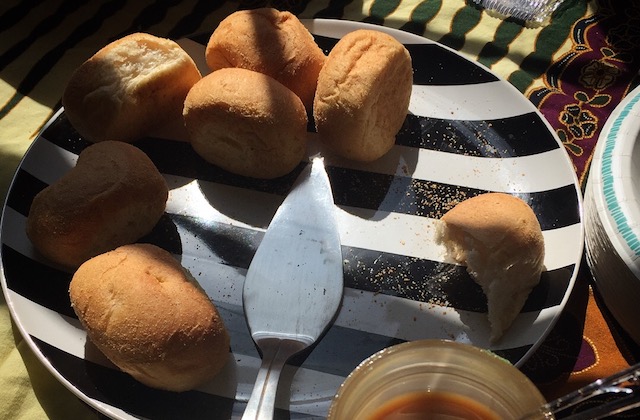Media in the United States can be a lonely place for employees of color. In a new NPR article published today (May 4), journalist Malaka Gharib explains that the industry’s White normativity burrowed so deep into her psyche that she never thought to reach out to fellow co-workers of Filipino heritage—even for meals:
rnt
If I missed Filipino food, I had to wait until my next trip back to California. Or attempt to make it myself. But I never would have thought to reach out to my Filipino colleagues.
t
Part of it was because I had never worked with any. Before I was at NPR, I worked for small companies with few people of color. The other part of it was that I was afraid of letting the ethnic side of me show at the office. To be professional, to be taken seriously, my family had always told me I should try to blend in with the predominant White culture.
All of this changed when an NPR intern contacted one of Gharib’s Filipino-American colleagues with an email titled, "Filipino intern looking to find other NPR Pinoys." The Tagalog word Pinoy is used as a noun or adjective to reference Filipino people or objects.
"He’s looking for other Filipinos in the building to hang out with," the co-worker told Gharib, who identifies as "Filipino-Egyptian American." "You should come to lunch with us."
Gharib wrote that this intern possessed a younger generation’s assurance of identity as an unavoidable part of their whole selves:
rnt
To me, that intern’s email was a signal that things were changing. He is part of the latest cohort of first-generation Filipino-Americans who grew up with celebrities of Filipino heritage in mainstream media, like singer Bruno Mars, rapper Ruby Ibarra and comedian Jo Koy. They’re proud of their ethnic heritage, they know who they are and they want to stay connected with their culture. Not just in their personal lives, but in their professional lives, too.
Gharib and her Filipino colleagues began a recurring potluck. The refer to themselves as the Kaibigan Klub; Kaibigan means friend:
About three months ago, a small group of NPR staffers of Filipino heritage began meeting in a fourth-floor kitchen for a weekly Pinoy potluck. Toting our plastic containers of soups and stews and our spoons and forks—Filipinos traditionally don’t use knives—we take turns microwaving our dishes, which we set at the center of the table to be eaten family style.
The gatherings allow this multi-generational group to share memories and build a sense of solidarity in an environment that is only 7.7 percent Asian-American:
rnt
Our potlucks quickly became a family affair. Second and third helpings are encouraged. It’s fine to use your own spoon to grab more food. And if you want to eat kamayan-style, with your hands, to get a little more rice, a little more meat, that’s okay, too.
t
The topic of conversation of course, was the food—and the memories it evoked. "Okra in sinigang?" I asked one colleague, flabbergasted. "We don’t do that in our family. But this is good, though."
Gharib noted that the Kaibigan Klub gatherings prompted her to try making several complicated Filipino dishes, including rellenong talong, despite her discomfort:
rnt
The filling has ground pork, potatoes, raisins, carrots, peas, onions and peppers. I have to mince all the ingredients into uniform pieces and fry the potatoes separately. The eggplant must be grilled, peeled and mashed gently into a fan shape. And then somehow, using deft hands and a hot pan, I must add the filling while using beaten eggs to form the eggplant into a self-contained omelet shape.
t
My mother used to make this dish at home all the time. It was a weeknight dish. I remember eating it for dinner as a kid, on top of a giant mound of white rice and big dollop of neon red banana ketchup. To me, it was the ultimate comfort food.
t
I have cooked it on my own only once before, two years ago, for a dinner party. I needed a motivation to make such a complicated dish.
t
Now I had a new reason to make rellenong talong—and in some ways, a better reason. I would be making this for my kababayan, for people with the same food memories, the same cravings, the same emotional response when presented with a soft roll of pan de sal (sweet bread).
